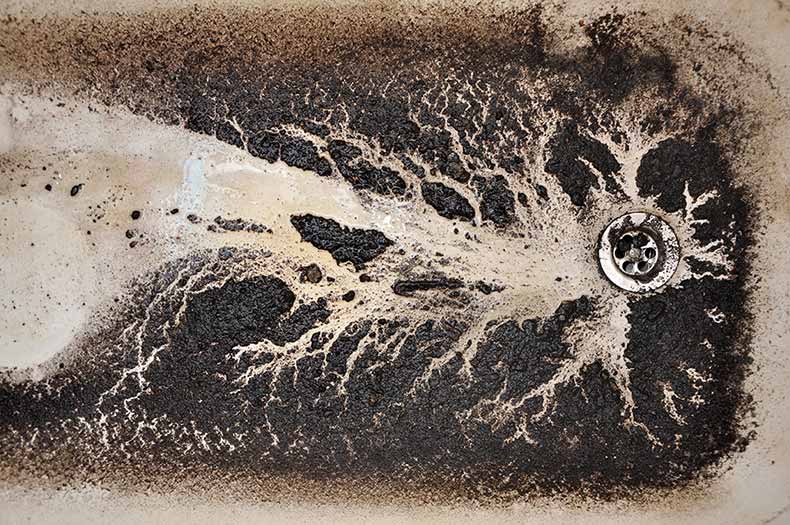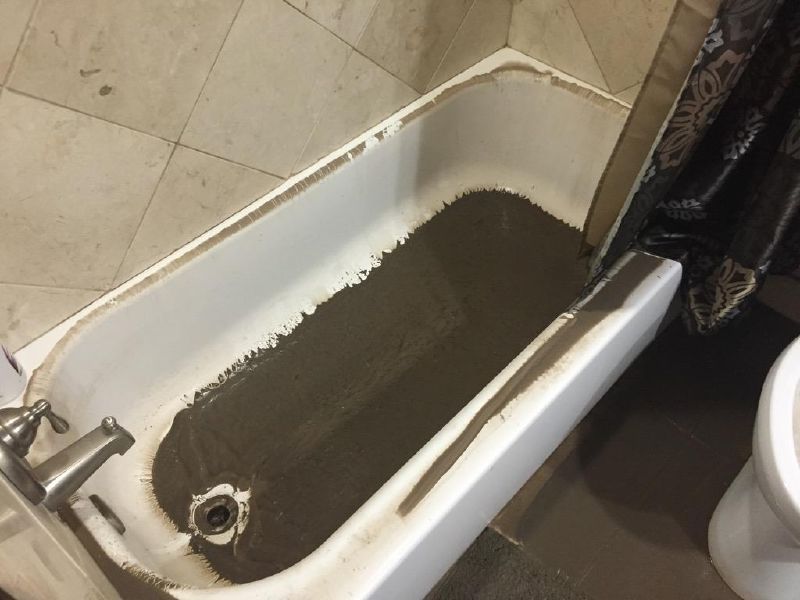Our Guide to Effluent Emergence in the Bathtub
Call TodayHave you been hunting for insight about Why is Sewage Backing Up Into My Bathtub??

Sewer backup in the tub can be an upsetting and unhygienic problem for any type of homeowner. Not just is it bothersome, however it also poses severe health dangers and shows underlying issues with the plumbing system. Comprehending why sewage is turning up with the tub is critical for taking suitable action to deal with the problem successfully.
Introduction to the Issue
Common Reasons for Sewer Back-up
Clogs in the Drain Line
Among one of the most usual sources of sewage backup is a clog in the drain line. This can occur as a result of the buildup of debris, grease, or international objects in the pipelines, stopping proper flow and creating sewer to back up into your tub.
Tree Origin Breach
Tree roots looking for wetness and nutrients can infiltrate sewer lines via small splits or joints. In time, these roots can grow and expand, causing considerable damage to the pipes and resulting in sewer backup issues.
Understanding the Issue
When sewage draws back up right into the bath tub, it's a clear indicator of an issue with the water drainage system. The wastewater that needs to be moving far from your home is instead discovering its way back into your home, which can lead to considerable damages and health hazards.
Prospective Reasons
A number of factors can add to sewer backup in the tub. From clogs in the sewage system line to issues with the plumbing facilities, identifying the source is important for discovering an option.
Aging Infrastructure
Older homes might have obsoleted plumbing systems that are much more susceptible to deterioration, splits, and deterioration. As pipes age, they come to be extra vulnerable to leaks and clogs, boosting the possibility of sewer backup occurrences.
Heavy Rainfall or Flooding
During durations of heavy rainfall or flooding, the sewer system may end up being overloaded with excess water, causing backups and overflows. This can lead to sewage backing up right into tubs and other fixtures inside the home.
Indications of Sewage Backup
Foul Odors
Undesirable smells originating from drains pipes or components, especially in the restroom, might show sewage back-up problems. These odors are typically strong and persistent, signifying an issue that requires prompt interest.
Slow Draining Fixtures
Tubs, sinks, and toilets that drain slowly or not at all could be experiencing sewage backup. If several components are impacted all at once, it's most likely that the concern stems from a typical factor, such as the primary sewage system line.
Gurgling Noises
Odd gurgling or gurgling noises originating from drains pipes when water is running in other places in your home are a measure of air caught in the plumbing system. This air buildup can result from sewage back-up and should be examined quickly.
Wellness Dangers Related To Sewer Backup
Contamination of Water
Sewer backup can pollute the water system in your home, posing a severe wellness risk to you and your family. Direct exposure to infected water can bring about stomach problems, skin infections, and other health problems.
Mold and mildew Development
Wetness from sewer backup can develop optimal conditions for mold development in your home. Mold spores can exacerbate respiratory system troubles and trigger allergic reactions in sensitive individuals, making punctual cleaning vital.
Spread of Disease
Sewer contains unsafe germs, infections, and bloodsuckers that can create a range of conditions, including hepatitis, cholera, and gastroenteritis. Entering into contact with sewer or contaminated surfaces puts you in danger of infection.
Cleaning Up After Sewer Backup
Disinfection Procedures
Completely sanitize and disinfect influenced locations after sewer back-up to get rid of dangerous microorganisms and avoid mold and mildew development. Usage suitable cleansing items and safety gear to make sure risk-free and reliable cleanup.
Remediation of Affected Areas
Repair any damage to flooring, walls, or fixtures caused by sewer back-up. Relying on the level of the damages, you might require to change carpeting, drywall, or other materials to restore your home to its pre-loss condition.
Immediate Actions to Take
Turning Off Supply Of Water
In the event of sewage back-up, it's important to turn off the water supply to stop further contamination and damage. Locate the primary water shutoff valve in your house and shut it off up until the concern can be solved.
Contacting an Expert Plumber
Handling sewer back-up is not a do it yourself job. Contact a certified plumber with experience in taking care of sewage-related concerns to evaluate the situation and carry out necessary repairs or cleanings.
Avoiding Contact with Polluted Water
Till the sewer back-up is fixed, prevent contact with polluted water to prevent the spread of microorganisms and virus. Wear protective equipment if you need to be in the affected area and wash your hands completely later.
Preventive Measures
Normal Upkeep of Sewage System Lines
Arrange regular examinations and upkeep of your sewer lines to determine and address prospective concerns prior to they escalate into major troubles. This can consist of cleaning debris, evaluating for tree root invasion, and fixing any kind of broken pipelines.
Mounting Backwater Valves
Take into consideration mounting backwater valves in your plumbing system to prevent sewer from receding into your home throughout periods of heavy rainfall or flooding. These valves instantly close when water starts backing up, securing your residential property from contamination.
Proper Disposal of Home Waste
Prevent purging anything aside from toilet tissue and human waste down the commode to avoid blockages and obstructions in the sewer line. Dispose of oil, oil, and various other family chemicals effectively to lessen the risk of plumbing problems.
What To Do If Sewage Starts Coming Up Through Your Bathtub
Sewage coming up through your bathtub is more than just gross. It poses a major health risk as sewage contains harmful bacteria and microorganisms that can be dangerous if exposed to them. While your tub or shower will certainly need a deep cleaning when this occurs, you’ll first need to get to the root of the issue.
If you notice sewage coming up through your bathtub, research Cherry Hill, NJ, licensed plumbers right away to get it fixed.
Why Sewage Is Coming Up Through Your Bathtub
The most common reason for sewage coming up through your bathtub is a clogged sewer line. All the sinks, toilets, and tubs connect to a single drain pipe that leads to the sewer line under your house. This drain line carries all wastewater and sewage away from your home to the city’s sewer system.
When the sewer line becomes clogged or blocked, wastewater has nowhere to go but back toward your house. This results in sewage coming up through your drains, often starting with your tub or shower.
The sewer line can become blocked by anything, but the most common culprits include:
Hair ? Cooking oils and grease ? Food waste ? Soap particles ? Children’s toys ? Jewelry ? Baby wipes or other non-flushable items ? Dirt ? Rocks ? Tree branches and debris ? Rodents How To Fix A Clogged Sewer Line
When you experience sewage coming up through your bathtub, it’s always best to contact a professional. Attempts to fix a clogged sewer line without experience often lead to more plumbing damage. However, you can try a few things that may loosen blockages in smaller connecting pipes.
Don’t Use A Plunger
Plungers only work to loosen obstructions near the head of the drain or toilet. It won’t be able to reach your sewer line or unclog the blockage.
Turn Off The Water
Turning the water off from the main valve will prevent excess water from flowing into already backed-up areas. This will also keep more sewage from coming up through your drains.
Check Your Vent Pipe
When vent pipes become clogged or blocked, it can lead to problems with the sewer line. By pulling any obstructions out of the pipe, your sewer line should be able to properly drain. The vent pipe can be located on your roof, usually directly over your bathroom.
Snake The Shower Drain And Toilet
Using a drain snake can help break up the object causing a blockage. By snaking both the shower drain and the toilet, you may be able to fix the issue. You’ll know you’re successful if the tub drains all sewage and wastewater.
Call A Professional
If these tactics don’t work, you will need to call a professional plumber. They will perform a camera sewer line inspection to find the source of the blockage and determine the best way to remove it. A professional will use a drain snake or conduct hydro jetting to unblock the sewer line and get things back in working condition.
If the obstacle blocking your drain line has caused any damage, you may also need your pipes repaired or even replaced.
Gurgling While Draining
Listen for gurgling sounds coming from the shower drain or sink, as this is an early warning sign of a clogged sewer line.
Frequent Clogs
If your toilet or other drains continuously become clogged, you need to call a professional to look at it. While you may be able to get the water or waste to drain again, it may only be a temporary fix.

As a keen reader about What to Do if Sewage Starts Coming Up Through Your Bathtub, I assumed sharing that article post was worthwhile. Feel free to take the time to distribute this entry if you liked it. We appreciate your readership.
Explore Now